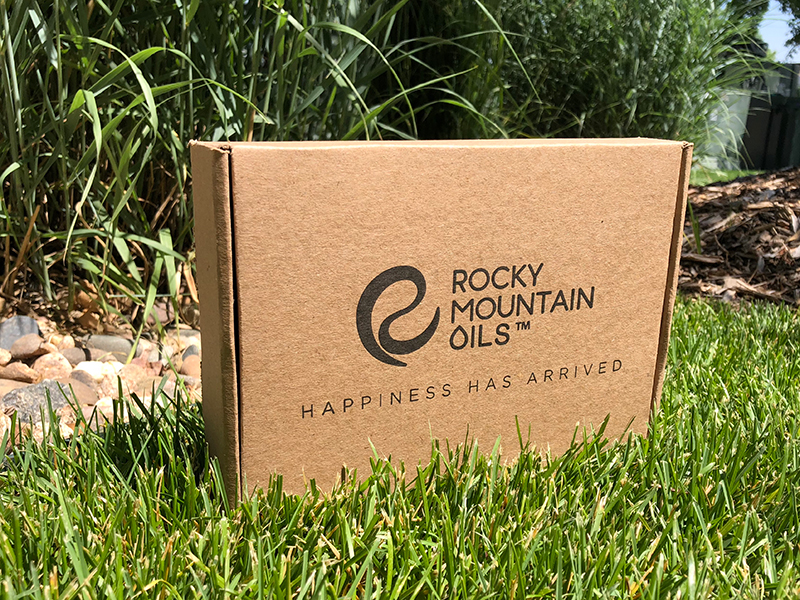When was the last time you thought about ink? If you are like most people, you use, see and touch ink everyday, but have very little understanding of how it is produced.
The majority of mainstream inks are produced using petroleum-derived materials – and this includes the colourful pigments in the ink products. For example, the pigment that makes black ink is carbon black, which is produced from heavy petroleum, a known carcinogen, according to the International Agency for Research on Cancer (IARC).
Also, the traditional carbon black manufacturing process produces significant sulfur dioxide, nitrogen oxide and particulate matter.
Until recently a bio-based material that creates a more environmentally beneficial pigment both upstream and downstream has been inexistent. This is changing because a Colorado-based start-up company, Living Ink, is using algae to make an eco-friendly black pigment, called Algae Black.
This new pigment is renewable, bio-based, safe and compostable. And it has been formulated into an innovative black packaging ink.
Living Ink is the brainchild of two PhD researchers from the US, Stevan Albers and myself, Scott Fulbright, who thought tiny algae cells could be used as printing ink pigments for packaging.
I recall thinking, why are we making disposable packaging ink with materials that are made to last an eternity? Why not use pigments that nature has already developed and which grow on a massive scale?
We took this idea of algae and started Living Ink, a biomaterials company developing ink products whose pigments are bio-renewable in content: the first of their kind.
Sustainable sourcing
The Algae Ink process starts in Southern California with a single cell of algae mixed with a large pond of water and sunlight. The algae is sustainably grown by a company called Earthrise Nutritionals. Its farm has more than 80 acres of production ponds and generates hundreds of tonnes of material every year.
Earthrise grows algae for products such as nutraceuticals, food supplements and even blue food colourant. The algae biomass is grown every day and harvested from the water.
Products such as the blue food colorant are extracted from the biomass and the remainder of the material is a waste product. This waste product is the starting material for Algae Black. Living Ink processes this biomass into a refined black pigment, which is subsequently integrated into ink formulations.

Environmental benefits
Ink and pigments only make up a small percentage by weight of a package, but can have significant environmental and safety issues. For example, pigments that contain heavy metals are still used around the world causing direct environmental and recycling issues.
A scientific study published in NC State University’s BioResources journal demonstrated that post-recycled fibers can be contaminated with heavy metals from ink residues.
On the other end of the scale, algae grows using sunlight and absorbs carbon dioxide out of the atmosphere, which makes it a renewable and sustainable source of biomass. Combined with the fact that Living Ink is using waste material, the Algae Black process is extremely sustainable.
In fact, Colorado State University did a carbon footprint analysis and determined that Living Ink’s process has significant potential to be carbon negative. This rare, but high impact result means more carbon dioxide is removed from the Earth’s atmosphere than is produced during manufacture. This is in great contrast to the traditional carbon black industry, which is known as a massive carbon emitter.
Algae Black creates a 200% decrease in carbon dioxide equivalent emissions compared with traditional carbon black per tonne produced.
Beyond greenhouse gas emissions, the pigment has also been shown to be safe according to third party analysis. Many packages are not considered to be home compostable due to the ink used. Algae Black is considered compostable and similar types of materials are shown to stimulate plant growth.
Converters & performance
Living Ink has refined its pigments to be integrated into many different types of ink, including flexographic, lithographic, gravure and potentially digital. The company’s chemists have ensured compatibility with existing printers.
For example, the company has sent ink to printers around North America and the printers use Algae Ink as they would use any other mainstream ink. Some printers have even acknowledged that Algae Ink is easier to clean off the flexographic plate than traditional inks.
Because the pigment can be used in a variety of ink formulations, it can technically be printed on nearly every packaging substrate currently used. Living Ink prefers producing and selling water-based ink for the environmental benefits but is open minded to integrating pigments in a wide variety of inks.
The start-up has worked with several converters in the US, one of which is Ecoenclose, which has played a critical role in development and demonstration of the ink. Its customers are pleased with the performance and feel good about the packaging they generate.
One customer, Rocky Mountain Oils, says: “Our next exciting evolution is supporting the use of Algae Ink for printing instead of traditional chemical ink. We’re extremely excited about the idea of eliminating the use of harmful chemicals from printed materials and look forward to incorporating Algae Ink more and more as the technology continues to evolve.”
A major challenge with biomaterials is producing similar performance characteristics compared with the status quo petroleum-based products. A major breakthrough for Living Ink was to refine the algae-derived black pigments to match the performance of a traditional carbon black pigmented ink in both colour and resilience.
The Rochester Institute of Technology performed an analysis demonstrating black Algae Ink was both darker black and more resistant to UV light than a traditional carbon black. This is an exciting milestone as it minimises any risk associated with brands using Living Ink’s biomaterial products.
Another major challenge with biomaterials has traditionally been the cost comparison. Living Ink believes it can get its product to a competitive price to carbon black in coming years. However, currently, Algae Ink is slightly more expensive by the kilogram. That said, the per-print cost increase is nearly non-existent when the price of ink is still under 1% of the entire package.
Living Ink has refined its pigments to be integrated into many different types of ink, including flexographic, lithographic, gravure and potentially digital
Packaging trends
Many large multi-corporate brands have promised 100% renewable, sustainable packaging by 2025. This is a commendable and necessary environmental goal. To achieve this, the integration of new and existing sustainable cardboards, papers and plastics will be prioritised.
However, the packaging industry must find sustainable replacements for materials such as ink, even if they only make up 1-3% of a package by weight.
Many large and small ink companies have been developing ink formulations that have higher amounts of bio-based content. There are companies such as Sun Chemical that have achieved 80% bio-based inks, but the last 20% has been a challenge due to the lack of eco-friendly pigment options.
This elusive bio-based pigment issue has been solved by Living Ink, allowing for 100% bio-renewable content packaging ink.
Marketing story
Soy ink has been used and marketed since the 1970s. Ink creates a major opportunity for marketing teams to tell a story. The consumer sees, feels and at times can smell the ink. Ink is an opportunity to tell a story – of which Living Ink is taking full advantage.

The raw material used in Algae Ink is a by-product of algae that is sustainably grown by Earthrise Nutritionals for use in nutraceuticals, food supplements and even blue food colouring
The company is literally growing pigments with sunlight and gluing them to a substrate to tell a story. When brands highlight the use of Algae Ink they are making a beneficial impact environmentally and demonstrating to the consumer that they are thinking of every molecule from the start to finish of their product and packaging.
Company goals
Living Ink has printed with numerous small and medium sized converters and brands. In 2019, the company built a supply chain and commercial facility that allows for scalable ink production. And it is working with several large multinational companies to roll out black Algae Ink.
Living Ink is also talking to other end users about integrating these renewable pigments into various products, such as plastics, cosmetics and even textile products. Beyond black, Living Ink can produce large amounts of green ink and is producing algae types that will yield cyan, magenta and yellow. These are exciting R&D projects that are months to years away from full-scale production.
The majority of packaging ink is not considered compostable or biodegradable. In fact, the chemicals used can often be toxic to the environment. Living Ink is changing that. The future of packaging ink might be algae-derived ink, where the materials not only cause no harm to the environment but rather contribute to and support a healthy environment.
